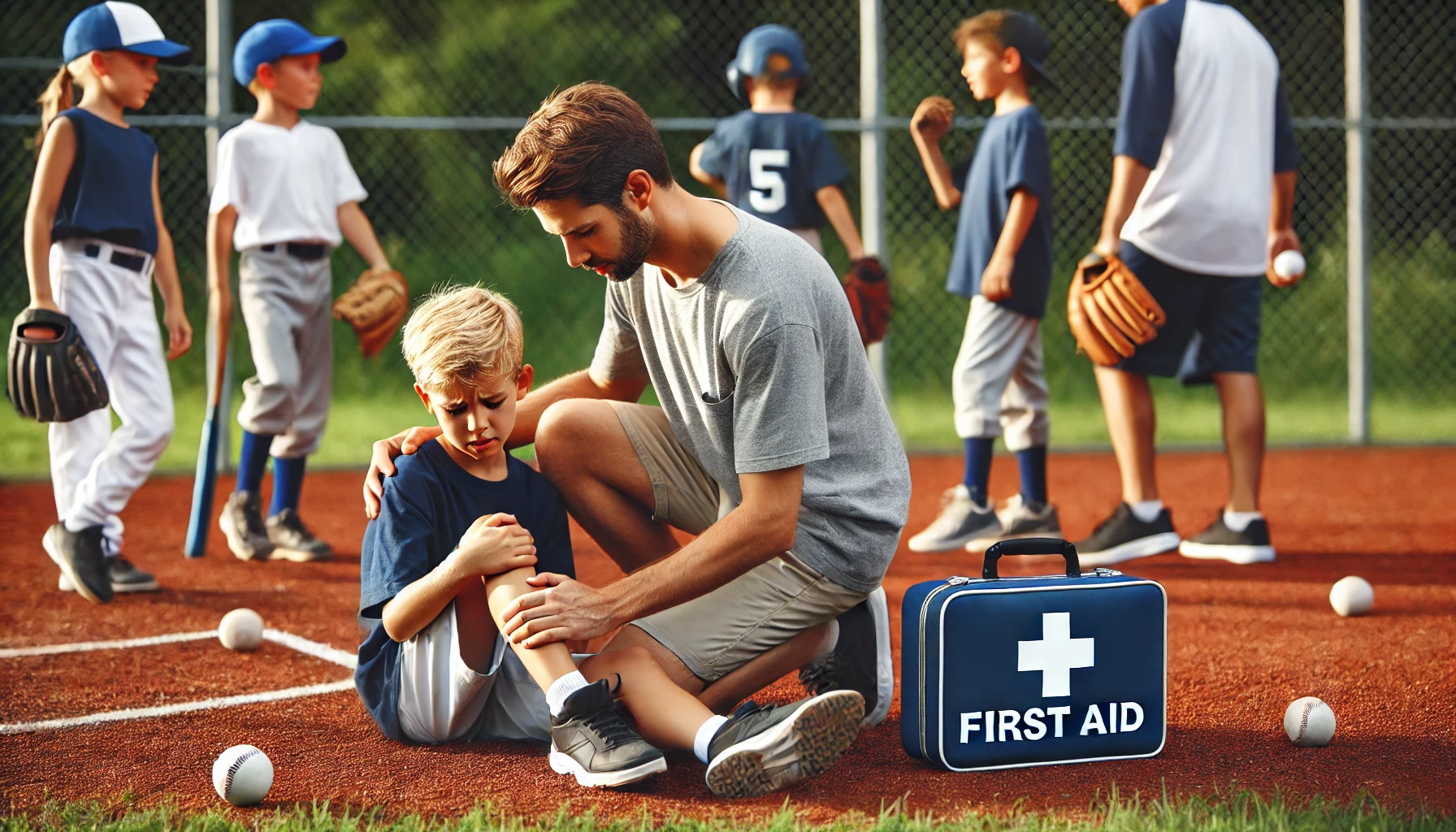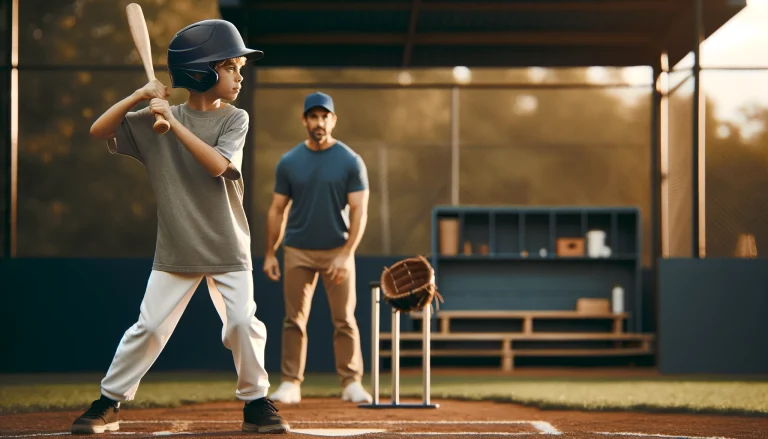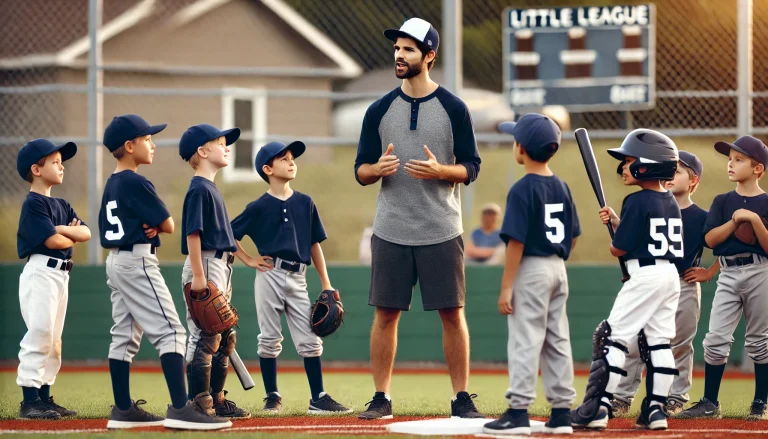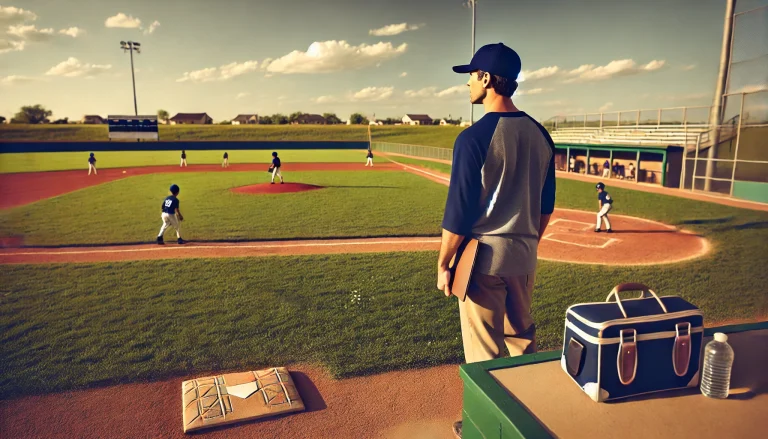Little League Coaching 101: Safety First – Injury Prevention Tips for Coaches
Introduction:
As a Little League coach, you’re not just teaching America’s favorite pastime. You’re also the first line of defense in preventing injuries among the nearly 100,000 young baseball and softball players ages 5-14 who end up in emergency departments every year. Your role in injury prevention is not just important, it’s crucial. Approach it with a sense of responsibility and vigilance.
The crack of the bat, the cheer of proud parents, and the joy on players’ faces make Little League baseball a memorable experience. But behind these magical moments lies an essential duty: ensuring every child returns home as healthy as they arrived. Whether you’re a seasoned coach or new to youth baseball, understanding and implementing proper safety measures isn’t just good practice – it’s vital. As a coach, you have the power to inspire and lead, prioritizing safety and instilling a culture of responsibility and vigilance that can make a lasting impact on your team.
This comprehensive guide will explore proven strategies for creating a safer baseball environment for your team. By implementing these tips, you’ll protect your players and build trust with parents. Remember, fostering a culture where safety and success go hand in hand requires open and regular communication with parents.
This page contains affiliate links and I earn a commission if you make a purchase through one of the links, at no cost to you. As an Amazon Associate I earn from qualifying purchases.
Injury Prevention Tips For Coaches
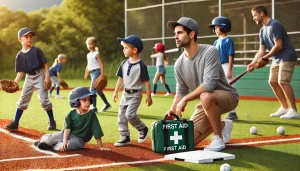
Building A Foundation For Safety
Thorough pre-season preparation sets the stage for a safe and successful season before throwing the first pitch. As a coach, your proactive approach to safety begins well before opening day.
Medical Clearance and Health Forms
Every player on your roster needs proper medical documentation before stepping onto the field. This includes:
- Annual physical examination forms
- Medical history questionnaires
- Emergency contact information
- Signed parental consent forms
- Documentation of any existing conditions or allergies
- Player insurance verification
Equipment Safety Checklist
Regular equipment inspections prevent unnecessary injuries. Ensure all team and personal equipment meets safety standards:
- Batting helmets: Check for cracks, proper padding, and secure face guards
- Catcher’s gear: Inspect chest protectors, shin guards, and masks for appropriate fit and condition
- Bats: Verify all bats meet Little League specifications and show no signs of damage
- Protective cups: Required for all catchers and recommended for all players
- Field equipment: Inspect bases, batting cages, and backstop fencing.
Little League Coaching 101: Safety First – Injury Prevention Tips For Coaches
Creating an Emergency Action Plan
Develop and communicate a clear emergency response strategy:
- Designate emergency response roles among coaches and assistants
- Map out emergency vehicle access points to your fields
- Post emergency contact numbers and facility addresses at all practice locations
- Establish a communication chain for accident reporting
- Create inclement weather protocols
- Plan evacuation procedures if needed

First Aid Kit Essentials
Stock and maintain a comprehensive first aid kit, including:
- Ice packs
- Athletic tape and bandages
- Antiseptic wipes and solution
- Band-aids in various sizes
- Scissors and athletic tape
- Latex-free gloves
- Basic first aid manual
- List of player allergies and medical conditions
Remember, proper pre-season preparation isn’t just about checking boxes – it’s about creating a comprehensive safety system that protects your players throughout the season. By addressing these fundamental safety measures before the season begins, you’ll be better equipped to handle challenges that arise during practices and games.
Proper Training And Warm-up Routines
A well-structured warm-up routine isn’t just about getting ready to play – it’s your team’s first line of defense against injuries. Understanding age-appropriate exercises helps ensure every practice and game starts safely.

Warm-Up and Stretching Exercises
- Arm circles and shoulder rotations
- High knees(10-15 yards each)
- Light jogging with directional changes
- Leg swings (forward/back and side-to-side)
- Hip rotations and trunk twists
- Jumping jacks or light skipping
- Walking lunges with arm rotation
Age-Appropriate Conditioning
Match physical activities to your players’ developmental stages:
Ages 7-9:
- Focus on fundamental movement skills
- Incorporate playful running games
- Basic body-weight exercises
- Emphasis on proper form over intensity
Ages 10-12:
- Structured running drills
- Sport-specific movement patterns
- Basic agility exercises

Hydration Guidelines
Establish clear hydration protocols to prevent heat-related illness:
- Encourage water breaks every 15-20 minutes
- If possible, set up water stations during practice
- Teach players to check their hydration levels
- Schedule longer breaks during hot weather
- Require players to bring personal water bottles
Weather Considerations
Adapt your practice routine based on weather conditions:
- Temperature Guidelines:
- Below 50°F: Extra warm-up time required
- Above 85°F: Increased water breaks and reduced intensity
- Above 95°F: Consider postponing or canceling activity
- Lightning Protocol: Follow the 30/30 rule
- Clear the field if lightning is within 30 seconds of thunder
- Wait 30 minutes after the last lightning sighting to resume
- Rain Safety:
- Assess field conditions for slipping hazards
- Ensure equipment remains dry and safe to use

Little League Coaching 101: Safety First – Injury Prevention Tips for Coaches
Remember, a proper warm-up routine should take 12-15 minutes and progress from light to moderate intensity. Listen to your players’ feedback and watch for signs of fatigue or discomfort. Making these practices routine helps create habits that will protect your players throughout their baseball careers.
Coach’s Tip: Save the longer stretches for after practice when the muscles are warm. This tip is crucial because it helps prevent muscle strain and injury.

Pitching Safety: Protecting Young Arms
Protecting young pitchers’ arms is one of the most critical responsibilities for Little League coaches. Following proper guidelines helps prevent injuries.

- Ages 6-8: Maximum 50 pitches per day
- Ages 9-10: Maximum 75 pitches per day
- Ages 11-12: Maximum 85 pitches per day
Required Rest Periods Days of rest needed based on pitches thrown:
- 66+ pitches: 4 calendar days rest
- 51-65 pitches: 3 calendar days rest
- 36-50 pitches: 2 calendar days rest
- 21-35 pitches: 1 calendar day rest
- 1-20 pitches: No rest required
Teaching Proper Mechanics Focus on these critical elements:
- Balance point position
- Straight line to home plate
- Age-appropriate grips (primarily fastball)
- Following through toward home plate
- Level shoulders throughout the delivery
- No rushing the motion
Warning Signs of Arm Fatigue To Watch for:
- Dropping the throwing elbow
- Taking extra time between pitches
- Rubbing the arm or shoulder
- Decreased accuracy
- Loss of velocity
- Changes in mechanics
- Complaints of discomfort
Rotation Management Keep players fresh and healthy:
- Track pitches for every pitcher
- Maintain detailed records
- Plan pitching assignments ahead
- Have backup pitchers ready
- Avoid playing catch on rest days
Little League Coaching 101: Safety First – Injury Prevention Tips for Coaches
Remember: No pitcher should throw through pain, and winning a game is never worth risking a young player’s arm health. When in doubt, make a conservative choice.
Understanding And Preventing Common Baseball Injuries
Understanding and preventing common baseball injuries helps keep your team healthy throughout the season. Every coach must know about the most frequent injuries and how to avoid them.
Sprains and Strains Protect muscles and joints:
- Proper warm-up before activity
- Correct sliding techniques
- Appropriate footwear for conditions
- Field awareness when running
- Prevention focus areas:
- Ankle stability exercises
- Proper running mechanics
- Base-running fundamentals
- Field condition awareness
Heat-Related Illness: Prevent heat problems before they start:
- Practice early or late in hot weather
- Regular water breaks (every 15-20 minutes)
- Watch for warning signs:
- Excessive sweating
- Fatigue
- Headache
- Confusion
- Heat safety protocols:
- Shade breaks
- Light-colored clothing
- Water readily available
- Modified practice schedules
It’s essential to know the signs and respond appropriately:
- Immediate removal from play if suspected
- Common signs:
- Confusion
- Balance problems
- Headache
- Vision problems
- Return to play protocol:
- Medical clearance required
- Gradual return to activity
- Parent communication
- Documentation
Prevention Best Practices
- Regular equipment checks
- Proper fitting gear
- Age-appropriate drills
- Adequate rest between activities
- Ongoing safety education for:
- Players
- Parents
- Assistant coaches
Remember: Most baseball injuries are preventable with proper preparation, awareness, and quick response to warning signs.

Creating A Safety-First Culture
A safety-first culture goes beyond rules and regulations – it’s about creating an environment where safe practices become second nature for players, coaches, and parents.
Establish Clear Safety Guidelines:
- No horseplay in dugouts
- Proper use of equipment
- Batting cage protocols
- Field entry/exit procedures
- Reporting injuries immediately
- Hydration requirements
- Equipment storage rules
- Dugout behavior expectations
Parent Communication Keep Families Informed And Involved:
- Pre-season safety meeting
- Written safety policies
- Regular updates on:
- Practice schedules
- Weather Policies
- Equipment needs
- Tournament Guidelines
- Encourage questions and feedback
- Share injury prevention tips
- Distribute emergency contacts
Lead By Example
- Always following safety protocols
- Wearing appropriate gear
- Using proper language:
- “When” not “if” about safety
- Positive reinforcement
- Clear, consistent messages
- Never rushing injury returns
- Praising safe choices
- Addressing unsafe behavior immediately
Building Team Accountability:
- Buddy system for equipment checks
- Team captains as safety leaders
- Player input in safety rules
- Recognition for safe practices
- Team discussions about:
- Near-miss incidents
- Safety improvements
- Successful Prevention
- Best practices
Safety Recognition Program Reward Safe Behaviors:
- Weekly safety MVP
- Team safety achievements
- Parent volunteer recognition
- Positive reinforcement for:
- Equipment care
- Following protocols
- Supporting teammates
- Reporting concerns
Remember: A strong safety culture doesn’t happen by accident. It requires consistent effort, clear communication, and buy-in from everyone involved with the team.
Emergency Response: When Quick Action Matters
Even with the best prevention measures, emergencies can happen. A well-prepared coach knows how to respond swiftly and appropriately when injuries occur.
Recognizing Serious Injuries Know when immediate action is required:
- Head/Neck Injuries
- Loss of consciousness
- Neck/back pain
- Confusion or dizziness
- Unequal pupils
- Severe headache
- Bone/Joint Injuries
- Visible deformity
- Inability to move
- Severe swelling
- Intense pain
- Unusual sound during injury
- Heat Emergencies
- Confusion
- Stopping sweating
- Rapid breathing
- Seizures
- Unconsciousness

When To Call For Medical Help:
- Unconscious player
- Suspected concussion
- Difficulty breathing
- Severe bleeding
- Possible fracture
- Heat stroke symptoms
- Cardiac issues
- Severe allergic reactions
Immediate Response Steps
- Stop all activity
- Assess the situation
- Provide immediate care
- Contact emergency services if needed
- Notify parents
- Clear the area around the injured player
- Keep other players calm and occupied
- Document the incident
Documentation Procedures Record Keeping Is Crucial:
- Injury report forms
- Witness statements
- Parent notification
- Medical recommendations
- Return-to-play clearance
- Follow-up actions
- Prevention measures
Return-to-Play Protocols Safe Return After injury:
- Written medical clearance
- Gradual activity progression
- Monitored return to:
- Practice
- Games
- Full activity
- Parent communication
- Team awareness
- Equipment adjustments, if needed
Emergency Action Plan Review Regular Updates And Checks:
- Emergency contact numbers
- Field addresses for 911
- First aid kit supplies
- AED location and status
- Access points for EMS
- Team medical information
- Local hospital information
Remember: In emergencies, staying calm and following established procedures helps ensure the best possible outcome. Regular review and practice of emergency protocols keep everyone prepared.

Conclusion
Safety First: Your Foundation for Little League Success
When it comes to youth baseball, nothing matters more than the safety and well-being of our young players. By implementing the safety measures and protocols outlined in this guide, you’re not just preventing injuries but creating an environment where players can thrive, learn, and develop their love for baseball.
Key Takeaways
- Prevention is always better than treatment
- Safety protocols should become routine habits
- Clear communication keeps everyone aligned
- Documentation protects players and coaches
- A safety-first culture builds trust with families
- Emergency preparedness gives peace of mind
Action Steps for Coaches
- Review and update your safety protocols
- Schedule a parent safety meeting
- Check and restock first aid supplies
- Create or update emergency action plans
- Keep safety records organized and accessible
Resources for Further Information
- Little League Baseball Safety Guidelines
- Local youth sports medicine programs
- Sports safety certification programs
- First aid and CPR training
- Youth baseball coaching clinics
Remember: Your role as a Little League coach extends beyond teaching baseball skills. You’re building character, instilling values, and, most importantly, ensuring every player stays safe while enjoying America’s pastime.
Make safety your top priority, and success will follow – both on and off the field.
